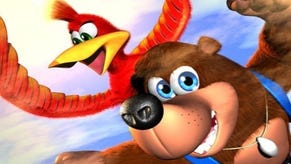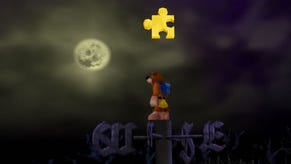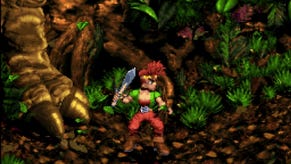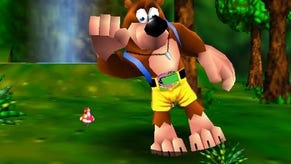Banjo-Kazooie
Bearly up to it.
Released to capitalise on the recent release of Banjo-Kazooie: Nuts & Bolts, the Xbox Live Arcade version of this 1998 Nintendo 64 favourite serves as a timely reminder of how far gaming has come over the past decade. At the time, Rare's star had never been brighter, flush as it was from the phenomenal success of GoldenEye. Gamers were desperate for what was seen as the Britsoft studio's answer to Super Mario 64, and blanket acclaim followed, with spectacular worldwide sales. But like so many early 3D games of the late 1990s, time hasn't been particularly kind to this colourful platform romp.
Presented with characteristic flair, it's a chirpy rescue tale featuring Banjo the bear and an intolerant bird named Kazooie who rides on his back. Structured almost identically to Super Mario 64, you wander around a varied hub-like environment known as Spiral Mountain on the hunt for the evil witch Gruntilda, who has captured Banjo's sister Tooty for basically being pretty.
During your travels through Gruntilda's lair, you'll explore various worlds on the hunt for the requisite number of jiggies - little jigsaw pieces that reside within each level. As with virtually all platform romps, you spend most of your time hoovering up anything not nailed down, and solving mini-challenges to mine each level for booty. In Banjo-Kazooie's case, each of the eight worlds houses 100 musical notes, 10 jiggies, honeycomb pieces, Jinjos to rescue, and Mumbo Jumbos. These little blue skulls prove doubly useful, as they can be traded in with a shaman to transform Banjo into various creatures, including termite, bee and crocodile.
Much of the early part of the game is pleasant enough, as you get to grips with the wide variety of jumps, rolls and attack moves via the ever-helpful Bottles the mole. As you progress, you learn that special pads will enable Banjo to fly, or jump extra high, or provide special boots to wade through otherwise-hazardous environments. But as undoubtedly innovative all of this extra functionality was at the time, much of the game's innocent charm is undone by a finicky camera system which rarely gives you the freedom you need.
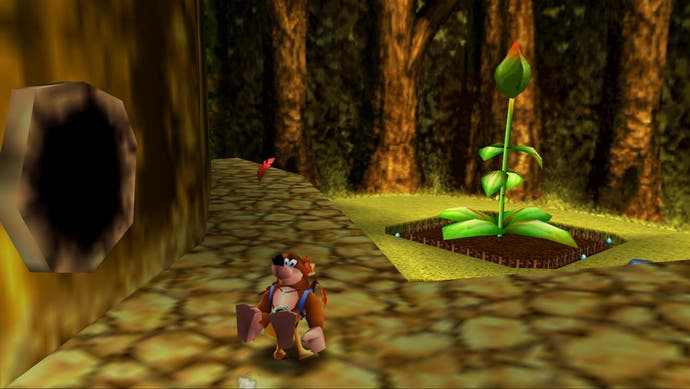
4J Studios has made a decent fist of retooling the controls for the 360 pad, with the standard two-stick movement/camera system we're all comfortable with, but it can only do so much. Rare was no doubt hamstrung by a combination of game engine limitations, a relative lack of 3D game experience and, of course, the hardware, and it's a game that ten years on you feel you're fighting against a lot of the time. You struggle to look in the direction you want, or get lumbered with an unhelpful angle that's flush against a wall.
Clunkiness is never far away. Swimming, for instance, Banjo feels as though he's plunged into Golden Syrup as you painfully wrestle him in a suitable direction and try to get the silly bear to haul his furry frame forwards. The more you pick through the often painfully garish environments, the more it becomes apparent just how irritating most of the mechanics are.
Learning to fly is almost as painful, with a ruinous inability to land on any surface without physically being about a centimetre away from it, causing you to constantly overshoot. Precise jumping is something of a dark art as well, thanks to a lack of, well, precision, a restless camera, and an ever-present inertia always threatening to send you too far.


